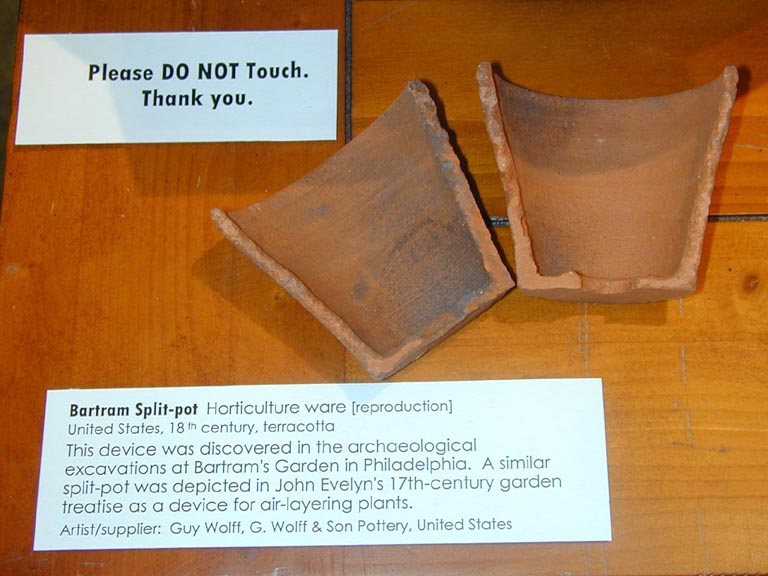|
|
|
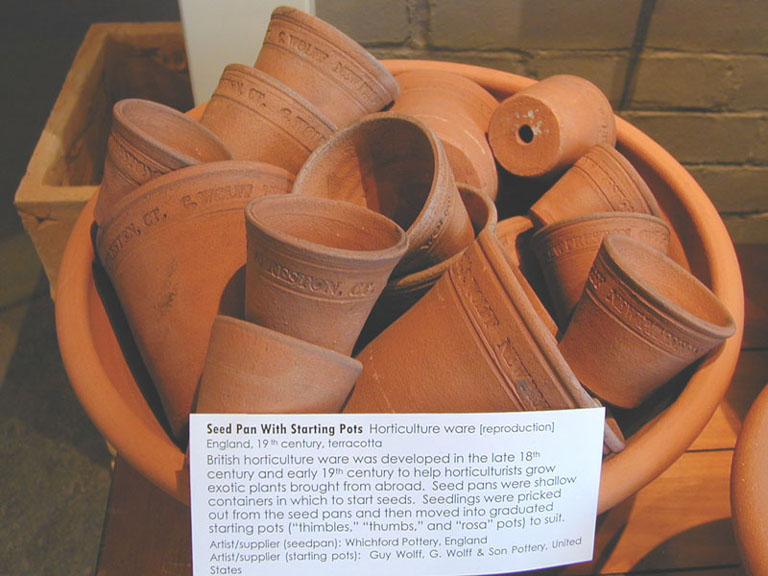 |
|
|
|
|
Seed Pan With Starting Pots Horticulture ware [reproduction]
- England, 19 th century, terracotta
British horticulture ware was developed in the late 18th century and early 19th century to help horticulturists grow exotic plants brought from abroad. Seed pans were shallow containers in which to start seeds. Seedlings were pricked out from the seed pans and then moved into graduated starting pots ("thimbles," "thumbs," and "rosa" pots) to suit.
Artist/supplier (seedpan): Whichford Pottery, England
Artist/supplier (starting pots): Guy Wolff, G. Wolff & Son Pottery, United States
|
|
|
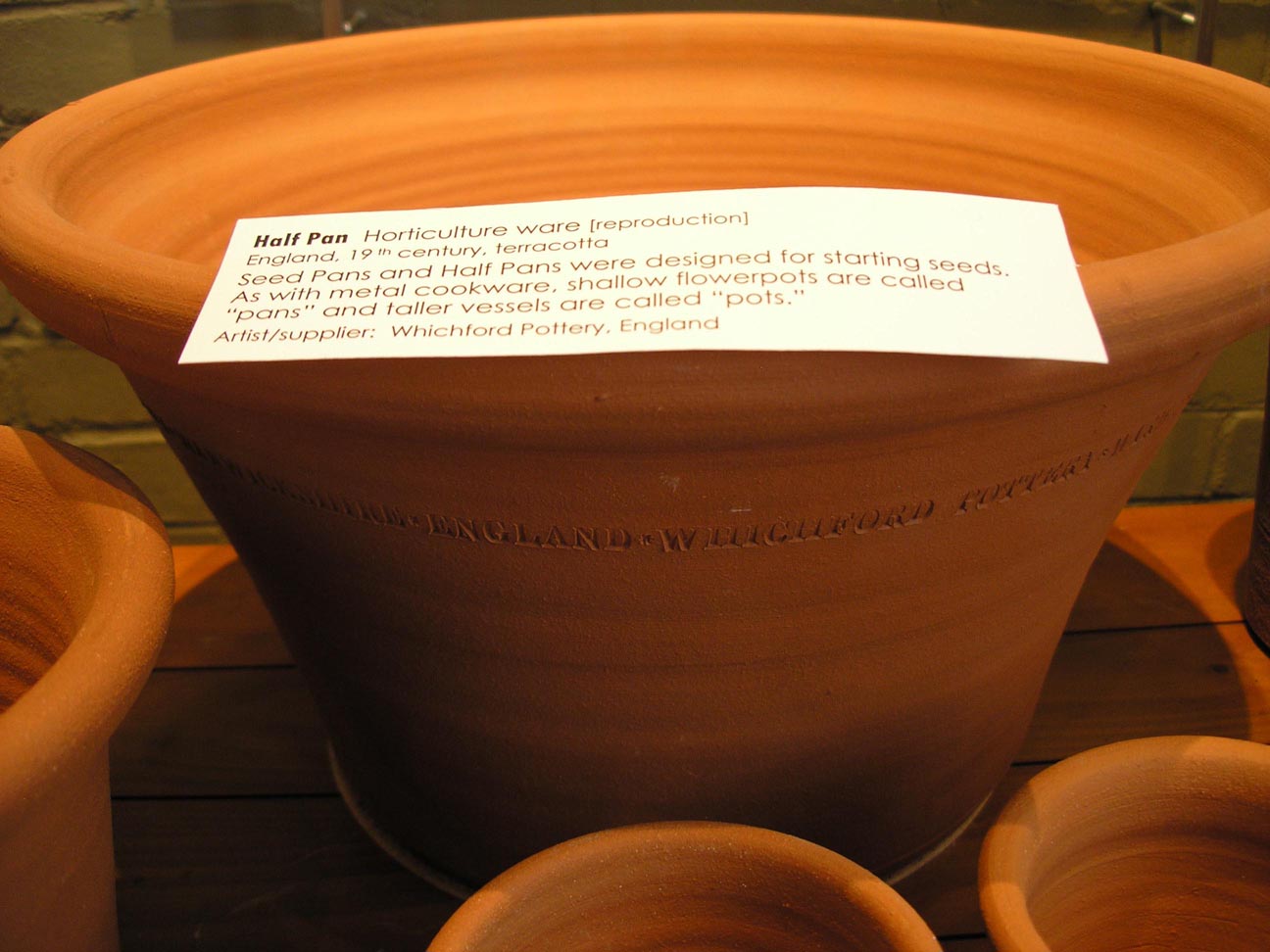 |
|
|
|
Half Pan Horticulture ware [reproduction]
- England, 19 th century, terracotta
Seed Pans and Half Pans were designed for starting seeds. As with metal cookware, shallow flowerpots are called "pans" and taller vessels are called "pots."
Artist/supplier: Whichford Pottery, England
|
|
|
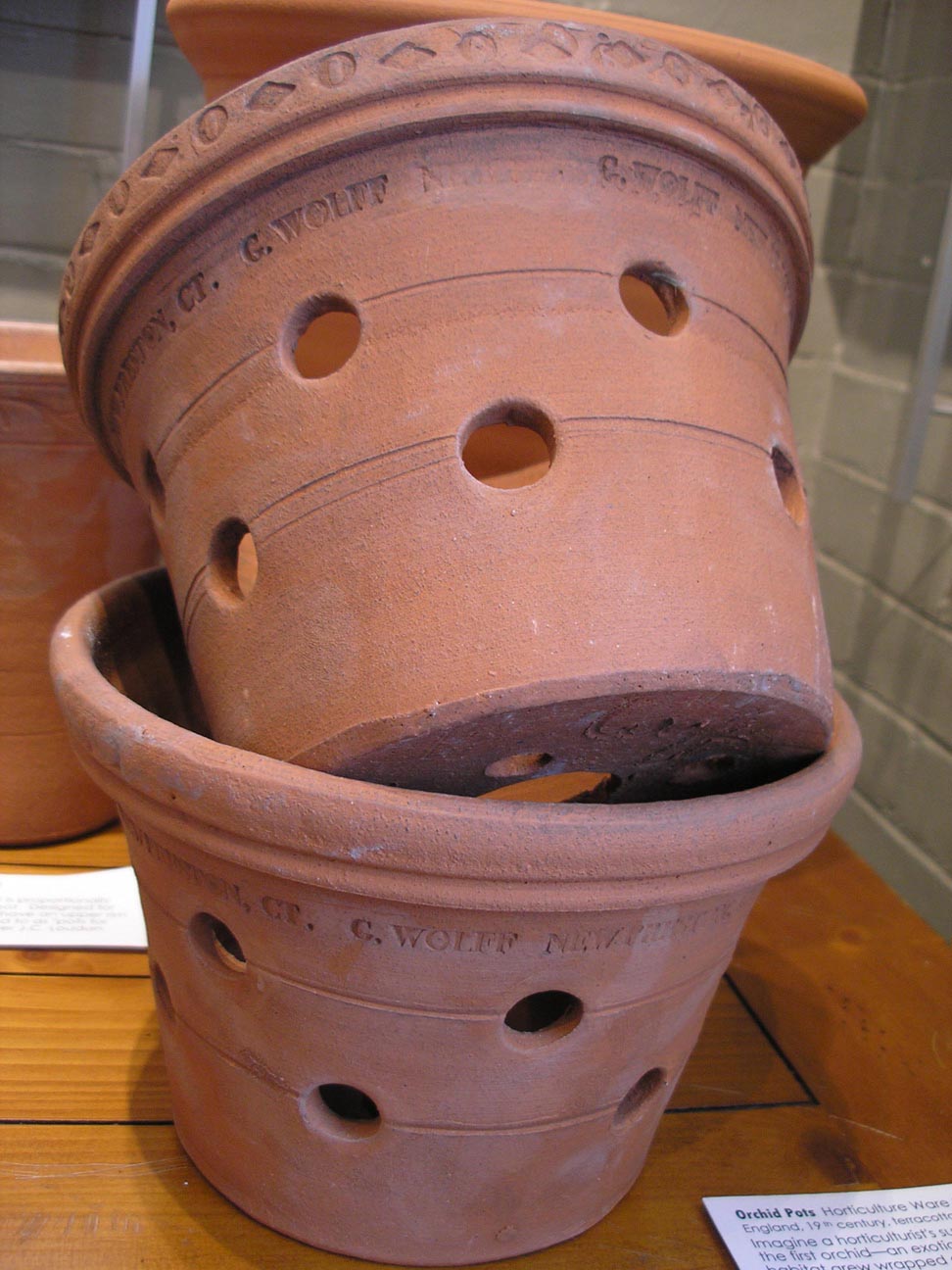 |
|
|
|
Orchid Pots Horticulture Ware [reproduction]
- England, 19 th century, terracotta
Imagine a horticulturist's surprise when attempting to pot the first orchid; an exotic plant whose roots in its natural habitat grew wrapped around the branch of a tree. The first orchid pots appeared in England in the late 19th century. In fact, the very first pierced pots reputedly were made by plant explorer Joseph Banks.
Artist/supplier: Guy Wolff, G. Wolff & Son Pottery, U.S.
|
|
|
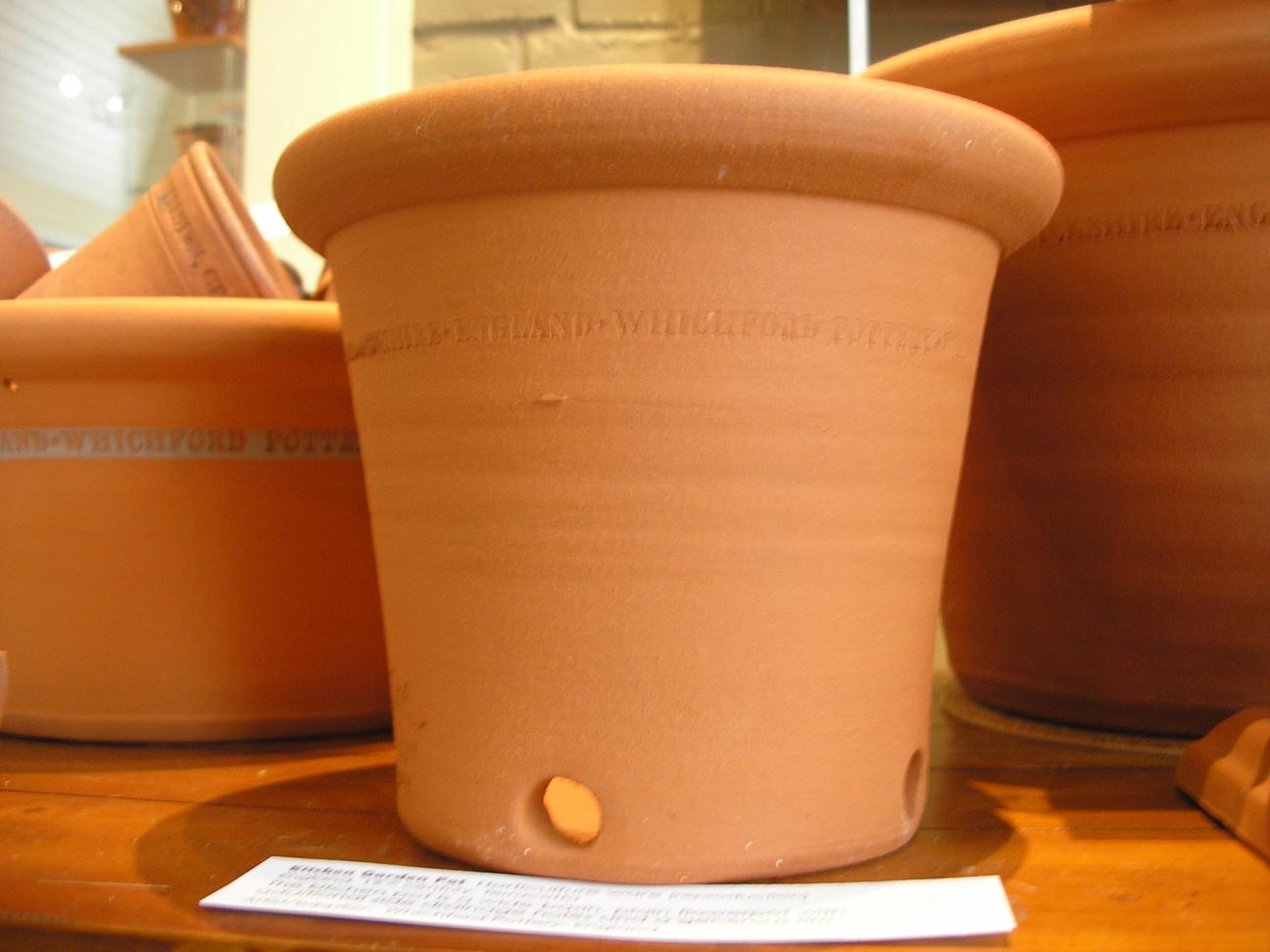 |
|
|
|
Kitchen Garden Pot Horticulture ware [reproduction]
- England, 19 th century, terracotta
The kitchen pot is a wide-basin, plain flowerpot with additional side drainage holes and a generous rim.
Artist/supplier: Whichford Pottery, England
|
|
|
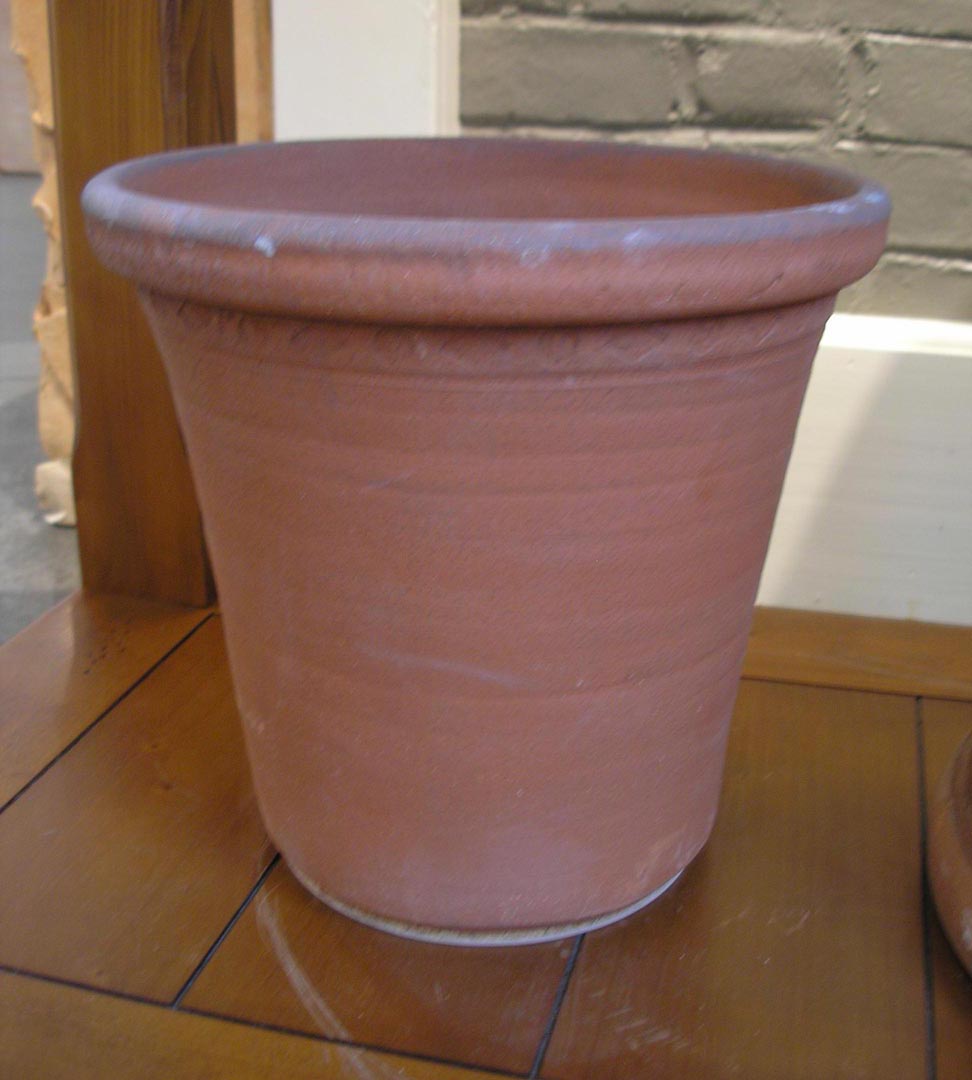 |
|
|
|
Full Pots Horticulture Ware [reproduction]
- England, 19 th century, terracotta
A Full Pot denotes the basic horticulture ware flowerpot form. Guy Wolff has embellished some of these pots with impressed Victorian "coggle" designs.
Artist/supplier: Guy Wolff, G. Wolff & Son Pottery; U.S.
|
|
|
|
|
|
|
|
|
|
|
|
|
|
|
|
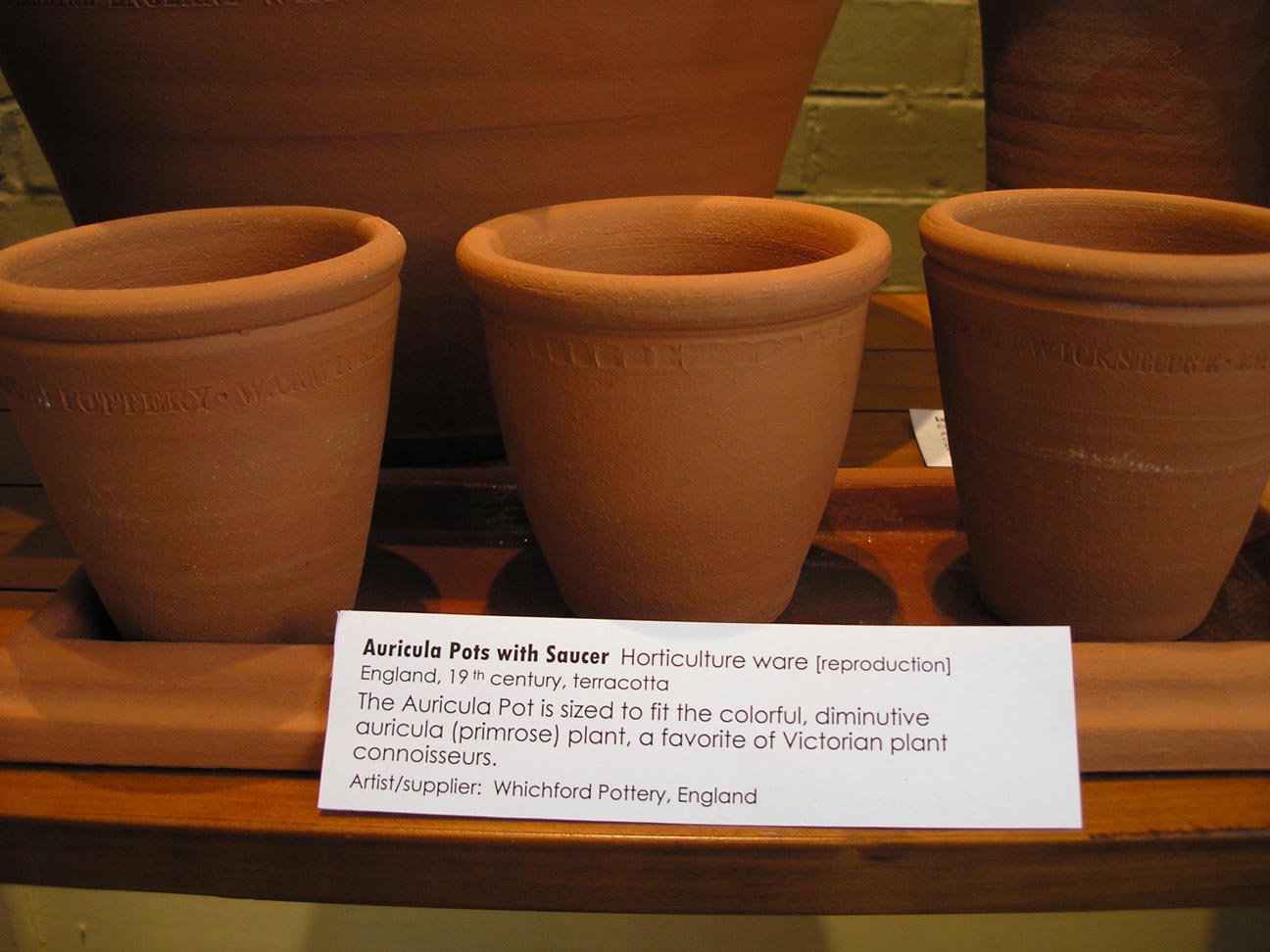 |
|
|
|
Auricula Pots with Saucer Horticulture ware [reproduction]
- England, 19 th century, terracotta
The Auricula Pot is sized to fit the colorful, diminutive auricula (primrose) plant, a favorite of Victorian plant connoisseurs.
Artist/supplier: Whichford Pottery, England
|
|
|
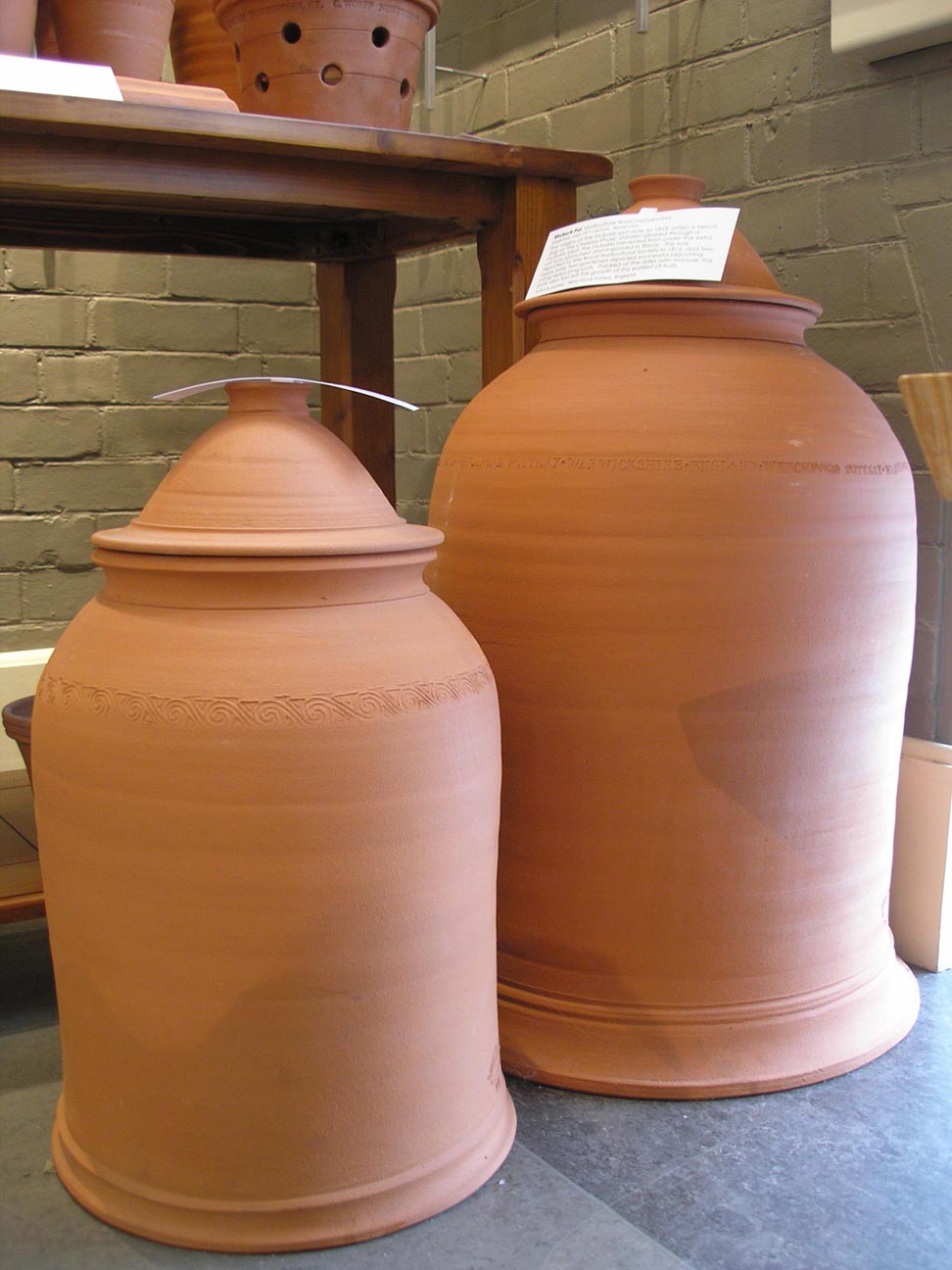 |
|
|
(on left) Sea Kale Pot Horticulture Ware [reproduction]
- England, mid-19 th century, terracotta
Blanching pots are bottomless vessels, wider at the bottom than at the top, for placing over certain types of plants such as rhubarb, sea kale, and (indoors) chicory. Rhubarb pots were developed around 1817 and soon became widespread, to be followed later in the 19 th century by the sea kale pot.
Artist/supplier: Whichford Pottery, England
(on right) Rhubarb Pot Horticulture Ware [reproduction]
- England, mid-19 th century, terracotta
The origins of the rhubarb pot date to 1815, when a trench dug at the Chelsea Physic Garden plowed through a rhubarb bed; the rhubarb harvested from under the extra soil was blanched and improved in flavor. This was reported to the Royal Horticultural Society in 1816, and two years later two gardeners reported successful blanching using extra-long pots. Packed at the sides with manure, the pots also forced the growth of this earliest of fruits.
Artist/supplier: Whichford Pottery, England
|
|
|
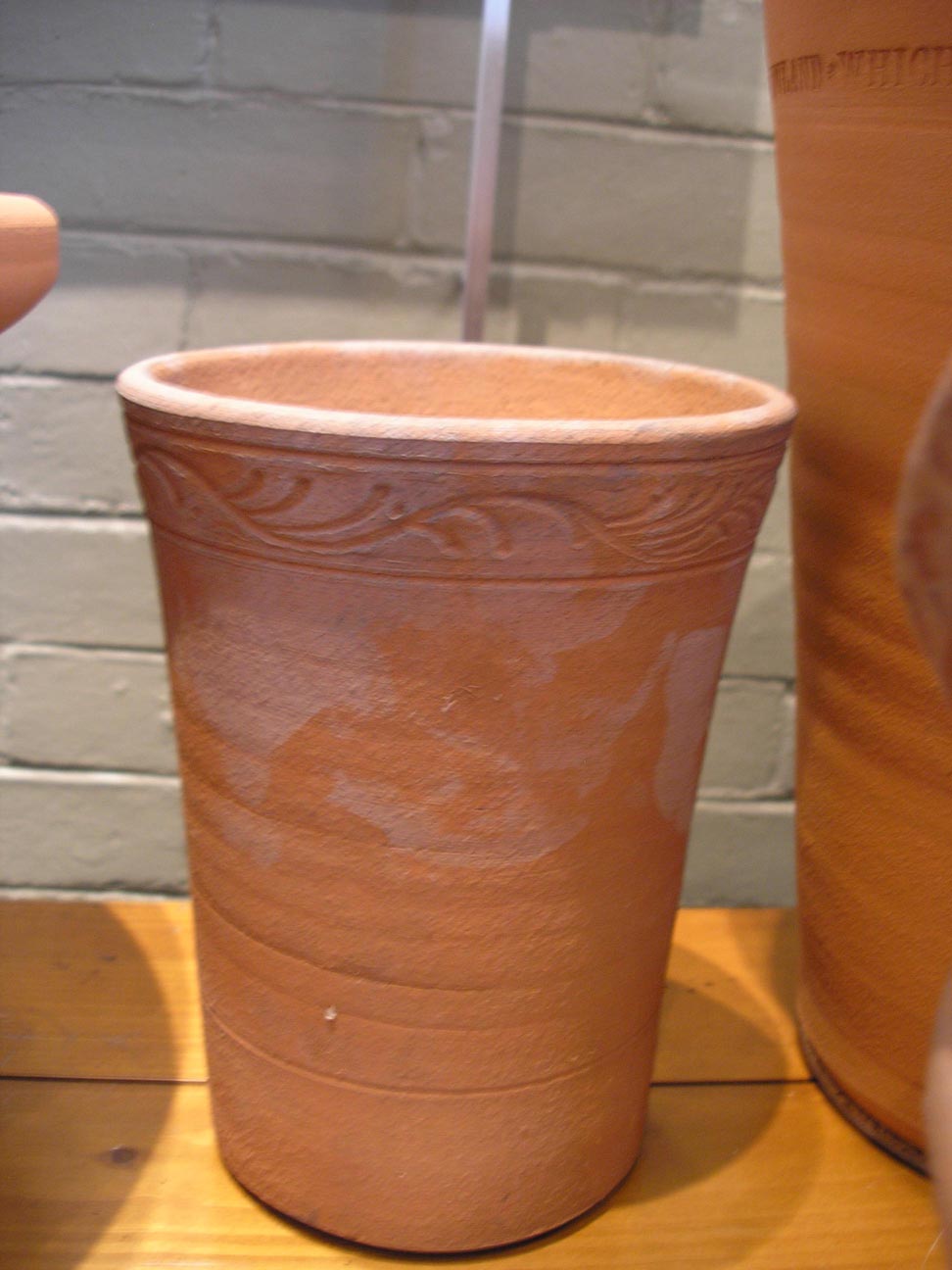 |
|
|
Long Toms Horticulture ware [reproduction]
- England, 19 th century, terracotta
A Long Tom refers to an elegant pot that is proportionally one third taller than the standard flowerpot. Designed for plants with deep roots, long toms usually have an upper rim for easier handling. The pots were referred to as "pots for bulbous roots" by 19th-century garden writer J.C. Loudon.
Artist/supplier: Whichford Pottery, England
|
|
|
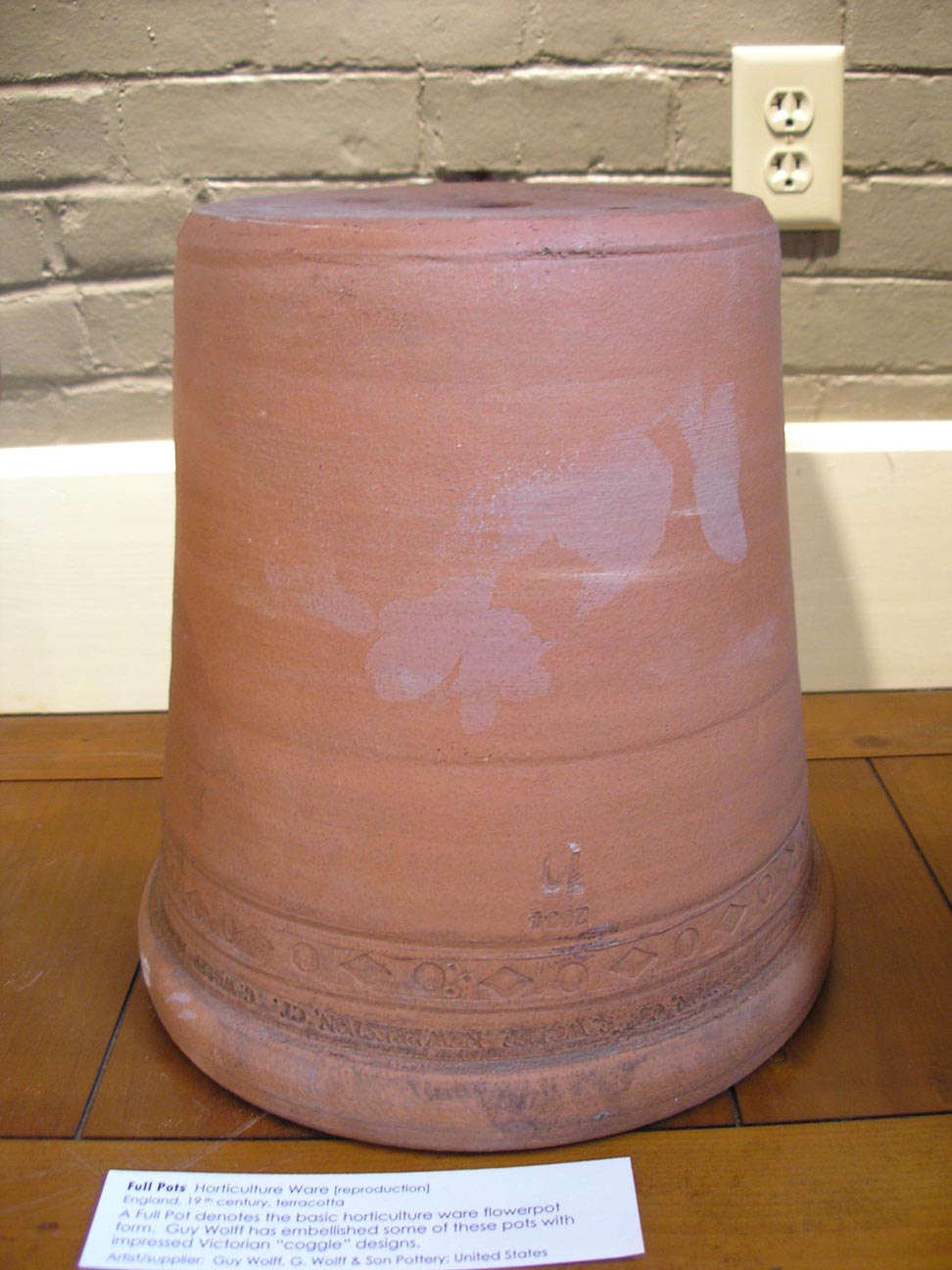 |
|
|
Full Pots Horticulture Ware [reproduction]
- England, 19 th century, terracotta
A Full Pot denotes the basic horticulture ware flowerpot form. Guy Wolff has embellished some of these pots with impressed Victorian "coggle" designs.
Artist/supplier: Guy Wolff, G. Wolff & Son Pottery; U.S.
|
|
|
|
|
|
|
|
|
|
|
|
|
Bartram Split-pot Horticulture ware [reproduction]
- United States, 18 th century, terracotta
This device was discovered in the archaeological excavations at Bartram's Garden in Philadelphia.
A similar split-pot was depicted in John Evelyn's 17th-century garden treatise as a device for air-layering plants.
Artist/supplier: Guy Wolff, G. Wolff & Son Pottery, United States
|
|

